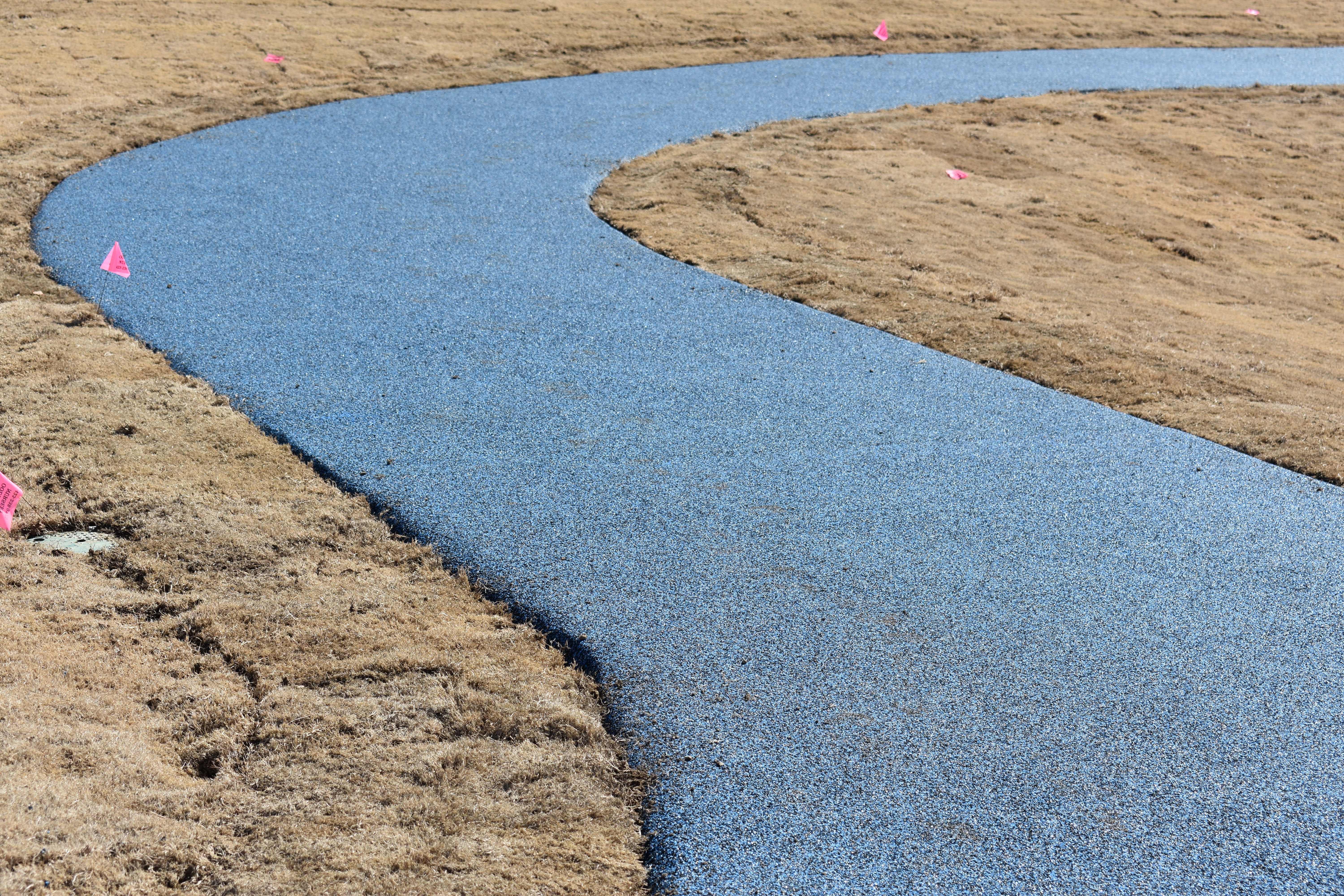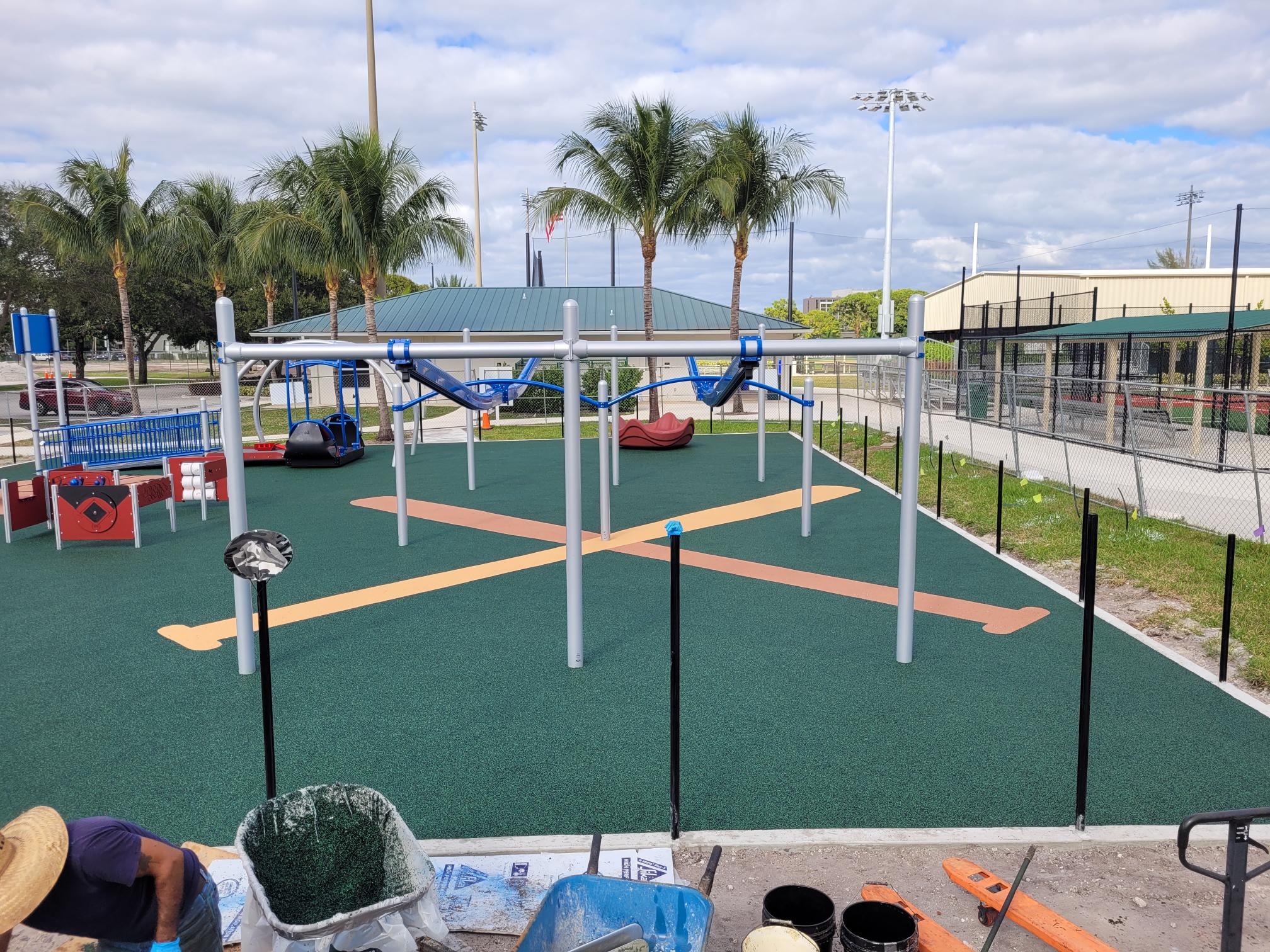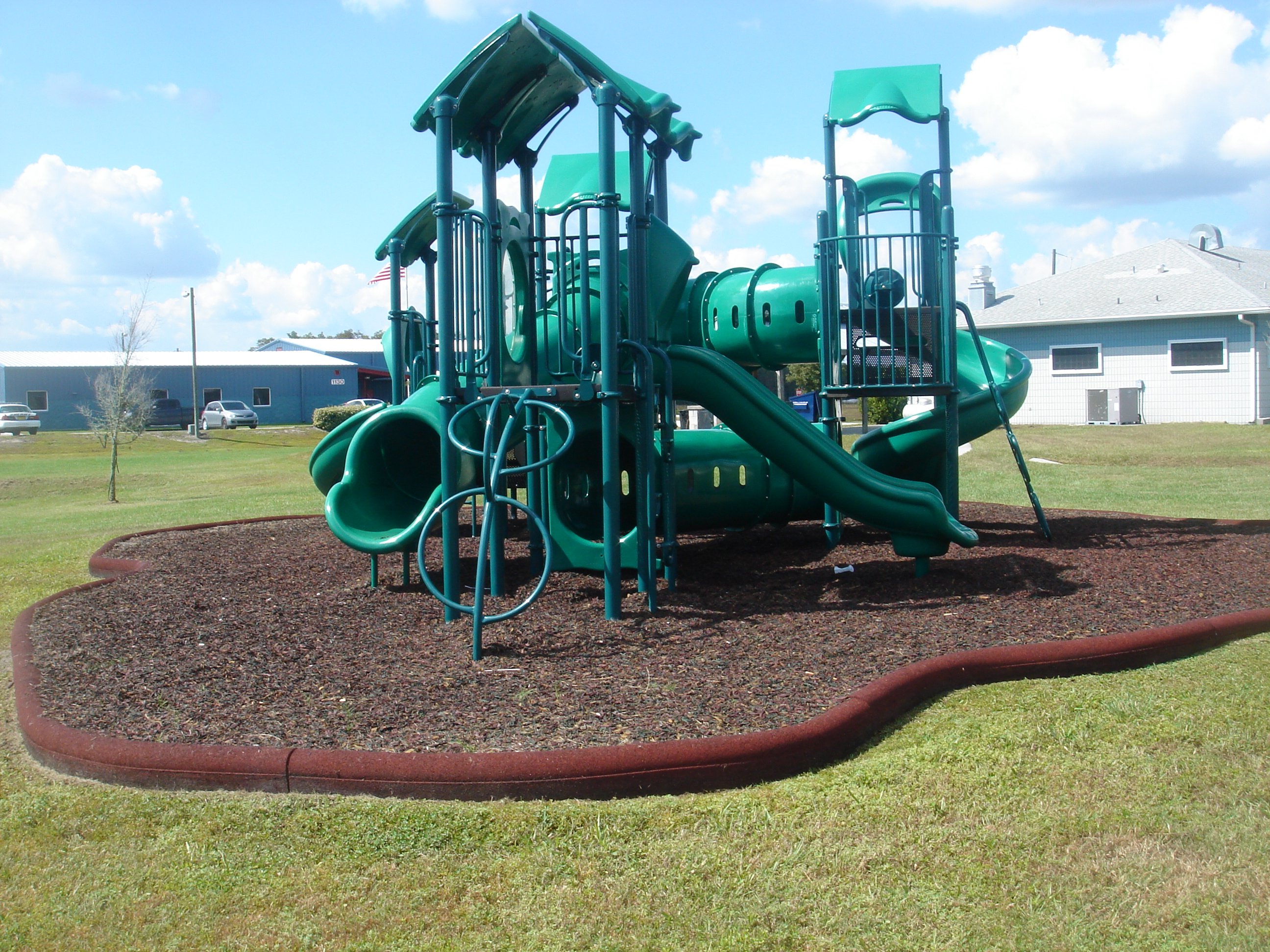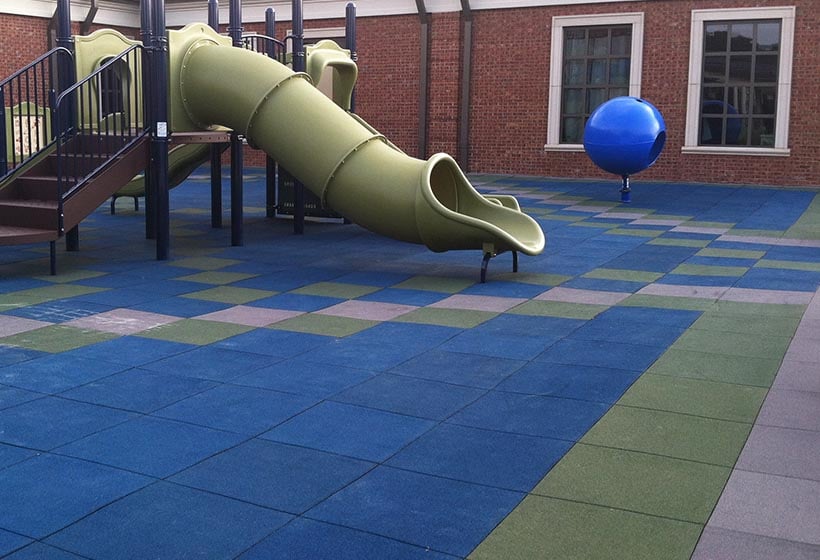Created from recycled rubber material and designed as an alternative to traditional concrete sidewalks, rubber walkways are rising in popularity. A rubber walkway is not only a sustainable solution, but it's also a safer and more cost-effective option for many designers and developers.
Rubber walkways are becoming increasingly common in a variety of public spaces, including parks, playgrounds, athletic fields and fitness areas. In addition, they are becoming the preferred option in facilities where safety needs to be a top priority, such as assisted living centers or schools.
Whether you are working to develop a new playground or you are hoping to upgrade your assisted living facility, you will find that these are the top five reasons to install a rubber walkway:
Slip Resistance and Safety
Perhaps the most significant advantage of investing in a rubber walkway is that this alternative surfacing solution provides you with a safer option for the facility you are designing or improving.
Rubber walkways are created with recycled rubber materials that offer excellent traction and cushioning, which helps to significantly reduce the risk of slips and falls. In the event of an accidental fall, the individual affected is far less likely to be seriously injured thanks to the buoyancy of this material.
Even when wet, rubber walkways offer improved slip resistance, which makes them an ideal option for areas that are prone to moisture, such as outdoor spaces. In fact, this is one of the top reasons why facility managers and operators at assisted living communities, public pools, playgrounds and city parks are installing rubber walkways more frequently when compared to other types of surfacing solutions.
Durability
While concrete walkways are prone to cracking — even within a year or two after being poured — rubber walkways are much more durable. Designed with longevity in mind, these rubber walkways can last for a decade or longer without having to be repaired or reconstructed.
Rubber walkways are highly resistant to a wide range of weather conditions, including rain, snow and UV rays. Regardless of the climate — or the extreme weather that a region experiences — rubber walkways will withstand the intensity of the local weather conditions.
In addition to being highly durable, even in the harshest climates, rubber walkways require little-to-no maintenance in order to maintain their integrity and appearance over time. As long as debris is regularly removed from the walkways, these pathways will remain in good working order for years to come.
The durability and minimal maintenance required makes rubber walkways one of the most affordable, long-term solutions for facility designers, particularly those that are looking to get the most value out of their facility improvement and maintenance budget.
Environmental Benefits
While concrete has a tendency to disrupt the natural environment and the production of cement increases the carbon dioxide emissions that are fueling climate change, rubber walkways are a viable, sustainable solution that protects and improves the local environment.
First and foremost, rubber walkways are created from recycled rubber materials — including old tires that would otherwise end up in a landfill. This surfacing solution helps to utilize items in a way that is responsible and sustainable while simultaneously creating a surfacing solution that is safer and better for the environment overall.
Rubber walkways also help support and improve the natural environment by:
- Minimally disrupting the local environment and allowing facility designers to create a landscaping plan that incorporates plants and flowers that are native to the local area.
- Creating a porous walkway that not only minimizes the risk of slip and fall accidents, but also helps to promote drainage, ensuring that water can easily drain onto the landscaping that needs it. In fact, rubber walkways can actually support the deep rooting of native plants and trees, ensuring that the local environment is supported for years to come.
- Many communities have found that rubber walkways aid in stormwater management, helping to reduce the risk of flooding in the local area.
The environmental benefits associated with rubber walkways make these one of the most beneficial surfacing solutions for any facility, whether it's a public park, a local school or a private business that offers an outdoor recreational space or fitness center.
Ease of Installation
While concrete sidewalks require a lot of time — and cooperative weather — to install correctly, rubber walkways can be installed easily at nearly any time throughout the year. In fact, rubber walkways can often be laid directly over an existing surface, eliminating the need to remove a previous surface or do extensive renovations before adding a rubber walkway.
Once rubber walkways have been installed, they are incredibly easy to maintain over the course of their lifespan. Generally speaking, facilities operators who opt to have rubber walkways installed will need to ensure that routine cleaning is performed on a regular basis. Basic tools can be used in order to clean the walkways. For the most part, the most important aspect of maintaining rubber walkways is to ensure that all debris is removed in a timely manner, as this helps to protect the integrity of the walkways while also reducing the risk of tripping and falling.
You can expect your rubber walkways to last for between 10 and 15 years, depending on the climate in your local area and the amount of traffic on the walkway on a regular basis. For the most part, these are considered to be one of the easiest surfacing solutions to both install and maintain.
Versatility and Aesthetic Appeal
Rubber walkways are heralded as one of the most versatile surfacing solution options, thanks in large part to the fact that their design can be customized in order to suit the design needs of the individual space or facility. Some places where rubber walkways are commonly used include:
- Residential Gardens
- Local Playgrounds
- Public Parks
- Schools
- Commercial Pathways
- Fitness Centers
- Assisted Living Facilities
- Industrial Areas
Noting the vast range of facilities where rubber walkways can be installed, it's important to recognize that this surfacing solution can be designed in a way that complements the space. Available in a wide range of colors and styles, rubber walkways can improve the appearance of your facility while also making it a safer space for everyone who uses it.
For example, playground designers love the fact that rubber walkways provide added protection in the event of a slip and fall, and also reduce the risk of pooling or puddling on the playground. In addition, the recycled rubber material is available in a wide range of colors, allowing them to choose bright and inviting colors that will captivate the hearts and imaginations of the young people who will be playing with their friends on the playground.
Regardless of the size and scope of your rubber walkway project, you will find that the right rubber walkway supplier can design a pathway that aligns with your aesthetic goals for your project. The options are virtually endless, making it easy to create a one-of-a-kind rubber walkway for your facility.
Get a Quote for Rubber Walkways at Rubber Designs
At Rubber Designs, we specialize in providing our clients with high-quality, sustainable rubber surfaces. Our specialists can work with you in order to create a customized rubber walkway design that will enhance the appearance of your facility while simultaneously improving both the safety and functionality of the space. Check out our poured-in-place rubber FlexTrails or our bonded trails to get an understanding of what products we offer.
Contact us today to learn more about the best rubber walkway options available to you.




